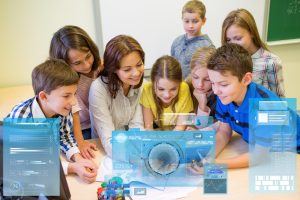In today’s swiftly evolving digital landscape, the emergence of advanced AI tools is reshaping the significance of coding skills in the job market. However, for children, learning to code transcends the mere acquisition of job skills. It is a journey into the realm of creativity, problem-solving, and self-confidence. Debugging, an often-overlooked aspect of programming, plays a pivotal role in this educational adventure. It’s not just about correcting errors; it’s a pathway to developing essential life skills.
By navigating through the challenges of debugging, children learn to approach problems with a creative mindset, bolster their resilience, and enhance their self-confidence. This introduction sets the stage for a discussion on how debugging is instrumental in equipping the next generation with the skills to thrive in a future where adaptability and innovative thinking are paramount.
Understanding Debugging
Debugging might sound complex, but at its core, it’s a detective game for coders. When a program doesn’t work as expected, debugging is the process of identifying, understanding, and correcting the mistakes, or “bugs,” that cause the discrepancy. This integral part of programming teaches children that making mistakes is a natural step towards success. It encourages them to adopt a methodical approach, enhancing their problem-solving skills and fostering a deeper understanding of how coding works.
This journey starts with understanding that debugging is an expected, normal part of coding. It’s not a sign that a coder has failed; rather, it’s a sign that they’re learning and growing. For children, especially, acknowledging this can transform a moment of frustration into one of curiosity and determination.
By simplifying the concept of debugging for young learners, we can show them that it’s not just about fixing mistakes—it’s about understanding how and why things work the way they do in the world. Debugging is an essential skill that helps coders at all levels to improve their work, encouraging kids to embrace challenges with a positive mindset. By approaching debugging with a child-friendly explanation, we open the doors to a world where problem-solving becomes a thrilling adventure.
The Learning Potential of Debugging
Debugging offers a unique learning experience that goes beyond just identifying and fixing errors. It teaches children to think critically and logically, breaking down problems into smaller, manageable parts to find where things went wrong. This process fosters a growth mindset, helping kids understand that skills can be developed through effort and learning from mistakes.
Furthermore, debugging encourages children to approach problems with creativity. Sometimes, the solution requires thinking outside the box, applying knowledge in new ways, or even coming up with innovative solutions that hadn’t been considered before. This not only enhances their problem-solving skills but also boosts their creativity, making them more versatile thinkers.
Moreover, the process of debugging can significantly boost a child’s self-confidence. Each bug fixed is a challenge overcome, proving to themselves that they can tackle difficult problems and succeed. This sense of accomplishment fosters a positive self-image and resilience, qualities that are invaluable both in coding and in life.
By presenting debugging as a critical component of the learning process, it can help children develop a toolkit of valuable skills and serves as a powerful medium for intellectual and personal growth.
Embracing Mistakes
Teaching children to embrace mistakes as part of the learning process is crucial in their development as individuals. Debugging introduces them to the concept of iterative learning, where each error corrected is a step towards mastery. As parents or teacher, you can help children understand that mistakes are not just okay; they’re essential for learning. These are some helpful strategies:
- Normalize Mistakes: Share stories and examples where mistakes led to discovery and innovation, showing that even experts make errors.
- Positive Reinforcement: Encourage children to share their debugging victories, no matter how small, reinforcing the idea that overcoming challenges is rewarding.
- Learning from Errors: Teach kids to analyze their mistakes, not just correct them, fostering a deeper understanding of how and why solutions work.
This approach not only reduces fear and frustration associated with making mistakes but also cultivates a culture of perseverance and continuous improvement. By embracing errors as opportunities for growth, children learn resilience and develop a more creative and analytical mindset, which are invaluable skills in coding and beyond.
Practical Debugging Strategies for Kids
Introducing children to practical, hands-on debugging strategies can significantly enhance their coding skills and confidence. Here are three simple yet effective techniques designed to help kids tackle debugging in a structured and less intimidating way:
- Rubber Duck Debugging: Encouraging kids to explain their code, line by line, to an inanimate object (like a rubber duck) to find where the logic might have gone astray.
- Check for Typos: Teaching the importance of reviewing code for simple mistakes, which are often the culprit in errors.
- Break It Down: Showing how to test small parts of the code individually to isolate the error, making it easier to fix.
These strategies not only make the debugging process more approachable for young learners but also teach them valuable problem-solving methods that apply beyond coding. Including real-life examples or stories where these techniques have led to success can further inspire and educate both kids and their mentors on the journey of learning to code.
Role of Parents and Teachers
Parents and teachers play a critical role in supporting children through the debugging process, creating an environment that views mistakes as learning opportunities rather than failures. Adults can:
- Encourage a Growth Mindset: Model and promote attitudes that value effort, learning, and persistence over immediate success.
- Provide Support Without Solving Problems: Teach strategies for debugging, but allow children the space to apply these strategies themselves, fostering independence and confidence.
- Celebrate the Process: Recognize and praise the effort and learning that occurs through debugging, not just the successful outcome.
By actively supporting children in these ways, parents and teachers can help cultivate a positive learning environment that emphasizes the value of perseverance, creativity, and critical thinking in life challenges.
Success Stories
Sharing real-life success stories of children who navigated through the debugging process can serve as powerful motivation for both learners and their guides. This section highlights a few inspirational anecdotes or case studies where kids encountered challenging bugs, applied systematic debugging strategies, and ultimately succeeded. These stories illustrate not just the triumph over a coding obstacle but the broader life lessons learned through perseverance, creativity, and resilience.
Success Story 1: The Flight of a Young Coder’s Flappy Bird
Alex embarked on creating a 2D version of Flappy Bird using Scratch. Despite initial excitement, Alex encountered a bug that caused the bird to fly erratically, crashing the game. Frustrated but determined, Alex utilized a combination of Rubber Duck Debugging and breaking down the code. After several attempts and iterations, Alex identified a misplaced loop causing the issue. Correcting it not only fixed the game but also boosted Alex’s confidence in problem-solving and coding, turning a challenging obstacle into a triumphant learning experience.
Success Story 2: Navigating Through Mist to Success
Sara, a curious middle schooler, decided to tackle a real-world problem by programming a humidity sensor with Python to monitor plant health. The journey was fraught with challenges, notably deciphering the sensor’s erratic readings. Employing a methodical approach to debug her code, she meticulously tested each segment and researched possible causes. The breakthrough came when Sara realized a misinterpretation of the sensor data in her code. Correcting this not only made her project a success but also exemplified the power of persistence and critical thinking, skills that transcended the realm of coding into her everyday life.
Conclusion
Wrapping up the article, it’s essential to reinforce the idea that debugging is not just a skill but a valuable learning process that equips children with the resilience, creativity, and problem-solving abilities needed for the digital age. By embracing mistakes and viewing them as opportunities for growth, children can develop a robust set of soft skills that are applicable far beyond coding. Parents and teachers play a crucial role in this journey, providing the encouragement and support needed to transform challenges into stepping stones for success. This article has aimed to inspire and guide adults in nurturing a positive debugging mindset, fostering an environment where children feel empowered to explore, learn, and grow through coding.






